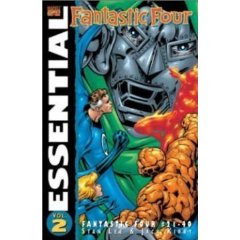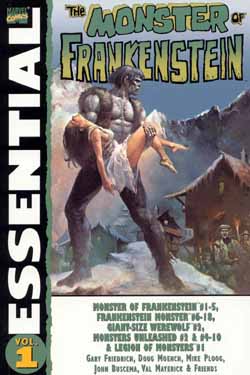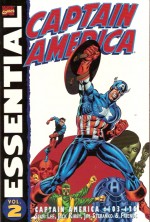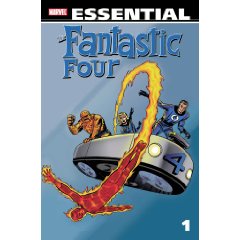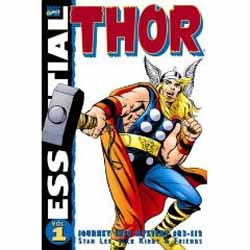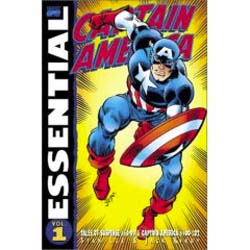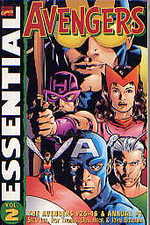
By Stan Lee, Roy Thomas, Don Heck, John Buscema & various (Marvel)
ISBN: 0-7851-1862-4
With the Avengers the unbeatable and venerable concept of putting all your star eggs in one basket continued to score big dividends for Marvel even after Jack Kirby moved on to other Marvel assignments and the all-stars such as Thor and Iron Man were replaced and supplemented by lesser luminaries.
With this second collection (reprinting Avengers 25-46 and the first Annual in economical black and white) the team – consisting of Captain America, Hawkeye, Quicksilver and the Scarlet Witch – was already a firm fan-favourite and the close attention to melodrama sub-plots leavened the action with compelling soap-opera elements that kept the fans riveted.
The team faced their greatest test yet when they were captured by the deadliest man alive in #25’s ‘Enter… Dr. Doom!’ by Stan Lee, Don Heck and Dick Ayers but, as change was ever the watchword for this series, the following two issues combined a threat to drown the world with the return of an old comrade. ‘The Voice of the Wasp!’ and ‘Four Against the Floodtide!’ (Lee, Heck and inker Frank Giacoia) made for a superlative action-romp but was simply a prelude to the main event, issue #28’s return of Giant-Man in a new guise as ‘Among us Walks a Goliath!’ This instant classic introduced the villainous Collector and extended the company’s pet theme of alienation by tragically trapping the size-changing hero at a freakish ten-foot height, seemingly forever.
Avengers #29, ‘This Power Unleashed!’ brought back Hawkeye’s lost love the Black Widow – a brainwashed Soviet agent – in an attempt to destroy the team using their old foes Power Man and Swordsman as cannon-fodder, whilst ‘Frenzy in a Far-Off Land!’ found the dispirited colossus embroiled in a civil war amongst a lost south American civilisation: a two-part yarn that threatened to end in global incineration in the ludicrously titled but satisfyingly exciting ‘Never Bug a Giant!’
‘The Sign of the Serpent!’ and its concluding chapter ‘To Smash a Serpent!’ from Avengers #32-33 (with Don Heck providing raw, gritty inks over his own pencils) was a brave, socially-aware tale as the heroes tackled a sinister band of organised racists in a thinly veiled allegory of the Civil Rights turmoil then gripping America. Marvel’s bold liberal stand even went so far as to introduce a new African-American character, Bill Foster, who would eventually become a superhero in his own right.
It was back to basics in #34’s ‘The Living Laser!’ but the second part ‘The Light that Failed!’ (scripted by Roy Thomas, who officially began his long association with the team here) again took on a political overtone as the super-villain allied himself with South American (and by implication, Marxist) rebels for a rollercoaster ride of thrills and spills. The team’s international credentials were further exploited when the long-departed Scarlet Witch and Quicksilver returned heralding an alien invasion of the Balkans in ‘The Ultroids Attack!’ and ‘To Conquer a Colossus!’ (Avengers #36-37).
Thomas clearly had no problem juggling a larger roster of characters as he promptly added Hercules to the mix, first as a duped and drugged pawn of the Enchantress in #38’s ‘In our Midst… An Immortal’ (inked by George Roussos, nee Bell) and then as a member from the following issue onwards, when the Mad Thinker attacked during ‘The Torment… and the Triumph!’. No prizes for guessing who was throwing the punches in #40’s ‘Suddenly… the Sub-Mariner!’ and another creative landmark occurred in ‘Let Sleeping Dragons Lie!’ when John Buscema took over the penciling in an epic of assorted monsters, insidious espionage and sheer villainy as the mad alchemist Diablo attacked the team.
The extended plotline continued in ‘The Plan… and the Power!’, and with Diablo defeated the team concentrated on rescuing the now reformed Black Widow from the Communist Chinese in #43’s ‘Color him… the Red Guardian!’ before the saga climaxed in ‘The Valiant also Die!’(inked by Vince Colletta), a blistering all-out clash to save the world from conquest.
Buscema had replaced Don Heck so the latter could work on the first Avengers Annual: a “49 page free-for-all” entitled ‘The Monstrous Master Plan of the Mandarin!’. Scripted by Thomas and inked by Roussos, this prodigious tribute to the golden Age Justice Society of America and All-Winners Squad saw Captain America, Goliath, Hawkeye, Hercules, Iron Man. Quicksilver, Scarlet Witch, Thor and the Wasp battle Enchantress, the Executioner, Living Laser, Power Man, Swordsman and the artificial behemoth Ultimo to save the world from the Mandarin’s boldest scheme. It’s everything a fan could want from a superhero tale – sheer escapism, perfectly handled.
Following some cutaways secrets of Avengers Mansion and a very cool pin-up the stories continue with Avengers #45, and a ‘Blitzkrieg in Central Park’ (Thomas, Heck and Colletta) wherein the triumphant team are attacked by the power-stealing Super-Adaptoid, before the avenging ends with a deadly attempt by an old foe to destroy Goliath and the Wasp.
‘The Agony and the Anthill!’, by Thomas and Buscema (inked by Colletta) is a taut, human-scaled drama, which began a long period of superb collaborations that would change the face of team-comics (as we’ll see in the next edition) but before that there’s one last treat here as the very first appearance of Henry Pym rounds out this book.
Written by Stan Lee and his brother Larry Lieber with art from Jack Kirby and Dick Ayers ‘The Man in the Anthill!’ was a simple yet compelling monster yarn from Tales to Astonish #27 where a young scientist experimenting with size changing serums was catapulted into a world of fantastic adventure when he became trapped at insect size. When the Fantastic Four’s success proved that superheroes were back to stay Lee and Kirby quickly retooled this tale into a series (also conveniently collected for your pleasure in Essential Ant-Man, ISBN 0-7851-0822-X).
Although the intermittent and inept use of mechanical grey-tones, and even some poorly reproduced artwork, occasionally mar the flow of this volume the superb content still shines through. These stories set the tone for Marvel’s superheroes: the group dynamics, the themes and even the kinds of menaces they faced. Where the Fantastic Four were as much explorers as champions; a family with the same passions, the Avengers were disparate individuals called together to get a job done. How well these adventures still read is testament to how well they did that job…
© 1963, 1964, 1965, 1966, 2005 Marvel Characters, Inc. All Rights Reserved

